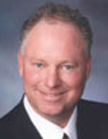HESPERIA—While Victorville failed in establishing a federal visas-for-investments program to boost local development, Hesperia has now taken up the gauntlet. Nevertheless, the prospect for leveraging foreign money into job creation in the High Desert is far-fetched, a member of the Hesperia city council said.
In April 2008, the city of Victorville entered into a relationship with CMB Export, LLC to manage an EB-5 program for Victorville at and around Southern California Logistics Airport, now being built on the grounds of the former George Air Force Base, which was shuttered by the Department of Defense in 1992.
Under its agreement with CMB and the terms of the federal program regulations, that company was supposed to recruit foreign nationals, in this case mainly ones from China and Korea, who were to put up at least $500,000 each in investments pertaining to the base. In exchange, the investors would receive visas, or green cards, for themselves and the members of their immediate families. The city backed out of that arrangement with CMB in June 2008 and proceeded with an EB-5 program of its own, triggering a $33 million lawsuit against the city for breach of contract, fraud, unfair competition and business interference.
Victorville initially succeeded in getting licensing from the federal government for its EB-5 effort, but in May 2010, a month after the city settled the lawsuit with CMB for $200,000, the U.S. Citizenship and Immigration Service tentatively suspended Victorville’s EB-5 program pending review, stating that city officials had misrepresented the projects to be funded by the investment program. In October 2010, the U.S. Citizenship and Immigration Service terminated Victorville’s program, citing “material factual discrepancies” in financial documents. It was the first time the federal government had moved to terminate an entity’s EB-5 authority.
In response, Victorville filed a lawsuit in Washington, D.C. District Court against the U.S. Citizenship and Immigration Service, the Department of Homeland Security and several senior federal officials. It also filed an appeal of the program cancellation with the U.S. Citizenship and Immigration Service’s Administrative Appeals Office, and temporarily agreed to a stay of the suit pending that appeal.
Last month, the administrative appeals office upheld the decision to terminate Victorville’s program, referencing Victorville’s failure to generate jobs using the foreign investments, misrepresentations or contradictions between what councilman Mike Rothschild and the city’s attorneys said about the program and discrepancies in city representations about the city’s interdepartmental loans and their use. Victorville has refunded the entirety of the $9.5 million in investments it received under the EB-5 program and city officials are now contemplating whether to proceed with the lawsuit.
Last year, a divided Hesperia city council voted to allow a private company, American Franchise Regional Center, to set up an EB-5 visa investor center in Hesperia. In August, American Franchise Regional Center got federal approval for the center and has been courting foreign investors ever since.
The EB-5 program was pushed in large measure by Hesperia councilman Russ Blewett. He was given assurance that even before the program was licensed two Chinese woman stood ready to make $500,000 investments in projects in and around Hesperia and that there were multiple prospects of landing other investors.
One gap in the understanding and representations on both sides, however, was the degree to which a synergy in the effort to develop Hesperia existed. The potential investors were given to understand that their money alone would not be fueling the entire development effort and that other infusions of money, including the application of redevelopment subsidizations, would create successful projects in the area in and around Hesperia.
In California, however, the state legislature last year withdrew cities’ redevelopment authority, foreclosing the ability to issue municipal bonds and have the cities use the proceeds to pay for the creation of infrastructure to spur development. Cities collectively challenged the state’s action, but last week the state Supreme Court ruled the state could close out the cities’ redevelopment agencies. Meanwhile, some city officials in Hesperia were hoping that potential foreign investors might ignore that reality and invest with the American Franchise Regional Center in Hesperia.
Hesperia city councilman Paul Bosacki said that hope is a pipe dream.
“It was never a solid idea to being with,” Bosacki said. “I saw it as a scam. Russ Blewett said he knew these two Chinese women ready to invest here. I voted against it when it came up. They went ahead with it, hoping they could use the money to replace money from our redevelopment agency. That won’t happen now. Good luck getting those Chinese ladies or anyone else to invest here now that redevelopment is dead. No businesses are interested in coming to the High Desert unless they get some kind of subsidization. Unless there are land swaps or incentives, they won’t come in. We are not going to get businesses to come in or developers to build. The state killed redevelopment and the city of Victorville is on the brink of bankruptcy. When Victorville goes down, it is going to go down hard and that is likely to suck the rest of the High Desert under with it.”
Bosacki added, “Right now, they are trying to hang on, and convince these people from China and everywhere else they can get a green card for 500,000 bucks and claim they are going to create jobs but I haven’t seen any jobs created out of it yet and that was before, when the investors were counting on redevelopment money. It ain’t happening. We were assured they could just set up in the city of Hesperia and that it was all tied into the RDA [redevelopment agency] but it turns out it is just another scam. We’ll see how long it lasts, even on paper. I think it is a non-issue. They were hoping to team up with the RDA, but there is no more city involvement in programs like that.”





